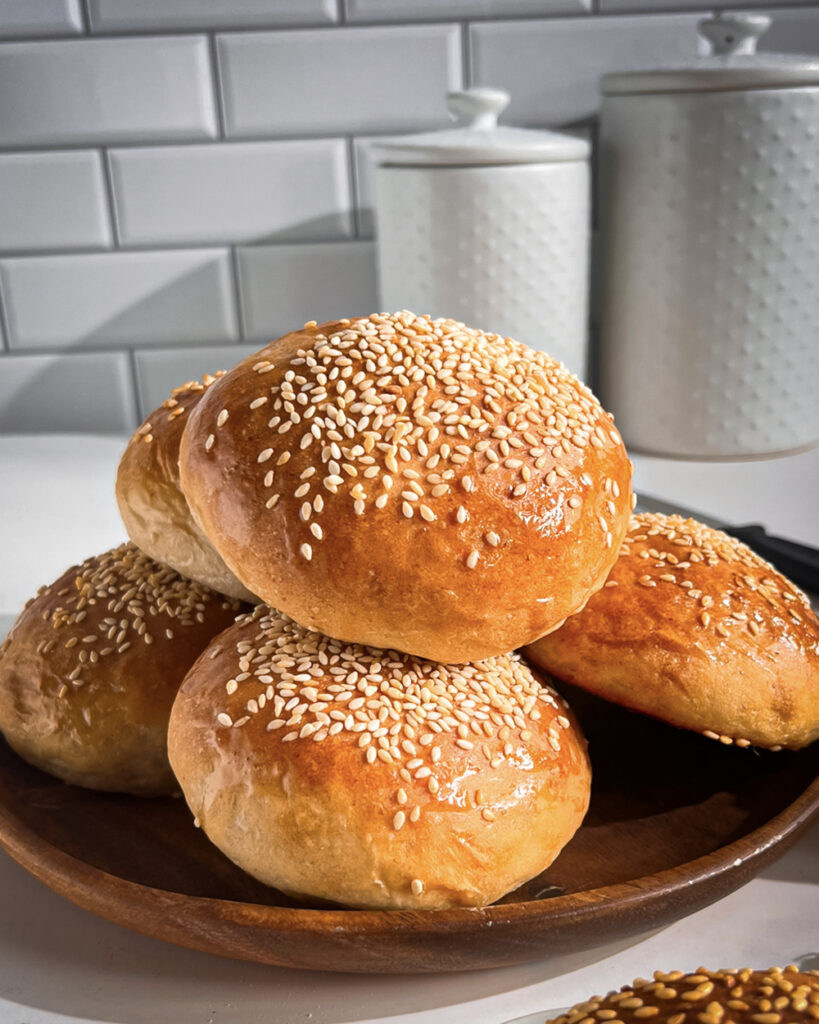Home » Bread & Yeasted Dough
Browse all breads and yeasted doughs recipes; from fluffy Burger Buns to soft, buttery Blueberry Brioche Rolls. Each recipe is made to help you achieve bakery-quality results at home, with options for both dairy and dairy-free variations. Perfect for beginners and seasoned bakers alike, these recipes bring the joy of freshly baked bread and pastries to your kitchen!

Bake like a professional with Saloni’s acclaimed cookbook, Vegan Baking Made Simple. With easy to follow instructions, simple ingredients and recipes for every occasion this is a book you will come back to time and time again!
The pans you need depend on what you’re baking. For my twisted brioche recipe, a muffin pan works well for individual servings. For a classic bread loaf cake, use an 8-inch or 9×5-inch loaf pan. For buns and bread rolls, baking sheets are perfect, allowing the dough to rise and bake evenly. If you’re making cinnamon rolls, a 13×9-inch pan is ideal for evenly baking them and holding their shape.
While I don’t test all my recipes with gluten-free flour, you can try using a gluten-free blend that includes xanthan gum for better structure. If you give it a try, I’d love to hear how it turns out!
For optimal freshness, store bread at room temperature in a paper bag, a breadbox, or wrapped in a clean kitchen towel. If you prefer, you can also use plastic wrap to keep the bread fresh, especially for softer loaves. Just be mindful that plastic can soften the crust. Avoid storing bread in plastic bags for long periods, as they can trap moisture. If you need to store it for longer, wrap the bread tightly in plastic wrap or aluminum foil and freeze it. To refresh frozen bread, thaw or warm it in the oven.
A stand mixer is not necessary to bake bread, but it can make the process easier and faster. You can knead the dough by hand, which allows you to feel the texture and consistency of the dough. A stand mixer, however, saves time and effort, especially when dealing with heavier doughs. If you’re new to bread-making, a stand mixer can provide more consistent results, but hand-kneading works just as well if you prefer a more hands-on approach.
If your dough doesn’t rise, it could be due to a few factors. First, check if your yeast is active. If the yeast doesn’t bubble or foam when mixed with warm water and sugar, it may be expired or too old. Also, ensure that your dough is kept in a warm, draft-free environment to rise; cold temperatures can slow or halt the process. If the dough hasn’t risen after the recommended time, try placing it in a warmer spot (like an oven with just the light on) or giving it more time. In some cases, the dough may need a bit of extra kneading or an additional rise.
The best yeast for baking depends on your needs. Active dry yeast is the most common and requires dissolving in warm water before use, making it ideal for most bread recipes. Instant yeast can be mixed directly with dry ingredients and works quickly, making it convenient for recipes with shorter rise times. Fresh yeast, typically used by professionals, has a shorter shelf life and needs refrigeration. For ease and versatility, active dry yeast or instant yeast is usually the best choice for home bakers